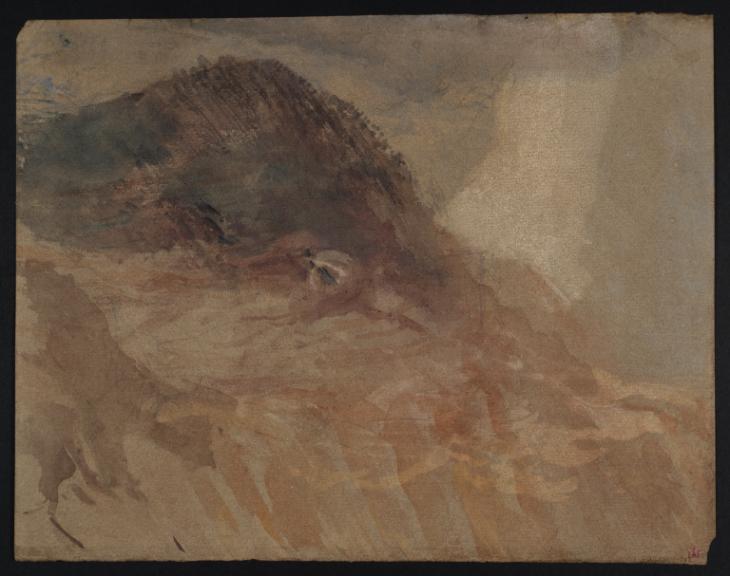This work was executed on a medium weight, brown wove paper in pencil, watercolour and gouache. The sheet does not have a watermark.
The graphite pencil sketching has been swiftly executed and focuses on the left hand side of the composition. Washes of watercolour have been built up in an informal fashion. The lead white, used predominantly in the sky on the right-hand side of the composition, has protected the paper and helped to preserve the original colour of the sheet in this area. The fact that the rest of the paper has darkened around it has sharpened the contrast of the white in the composition; originally this would have had a more muted, understated effect. In the top left-hand corner of the verso is what appears to be writing in black chalk but it is too smudged to be legible.
The bottom right-hand corner and the very tip of the top left-hand corner of the recto are missing. There is adhesive staining around the edges of the verso where the sheet has been inlaid in the past. There is also severe brown aqueous staining on the right hand side of the verso but despite its prominence this discolouration is not visible from the recto. This damage may have been cause during the 1928 Thames flood and may be the result of the transfer of colour and dirt from a wet leather binding onto the paper.
Helen Evans
April 2009
Revised by Joyce Townsend
March 2011
How to cite
Helen Evans, 'Technique and Condition', April 2009, revised by Joyce Townsend, March 2011, in John Chu, ‘?Coastal Terrain c.1830–45 by Joseph Mallord William Turner’, catalogue entry, June 2015, in David Blayney Brown (ed.), J.M.W. Turner: Sketchbooks, Drawings and Watercolours, Tate Research Publication, November 2016, https://www.tate.org.uk/art/research-publications/jmw-turner/joseph-mallord-william-turner-coastal-terrain-r1182924, accessed 02 April 2025.

